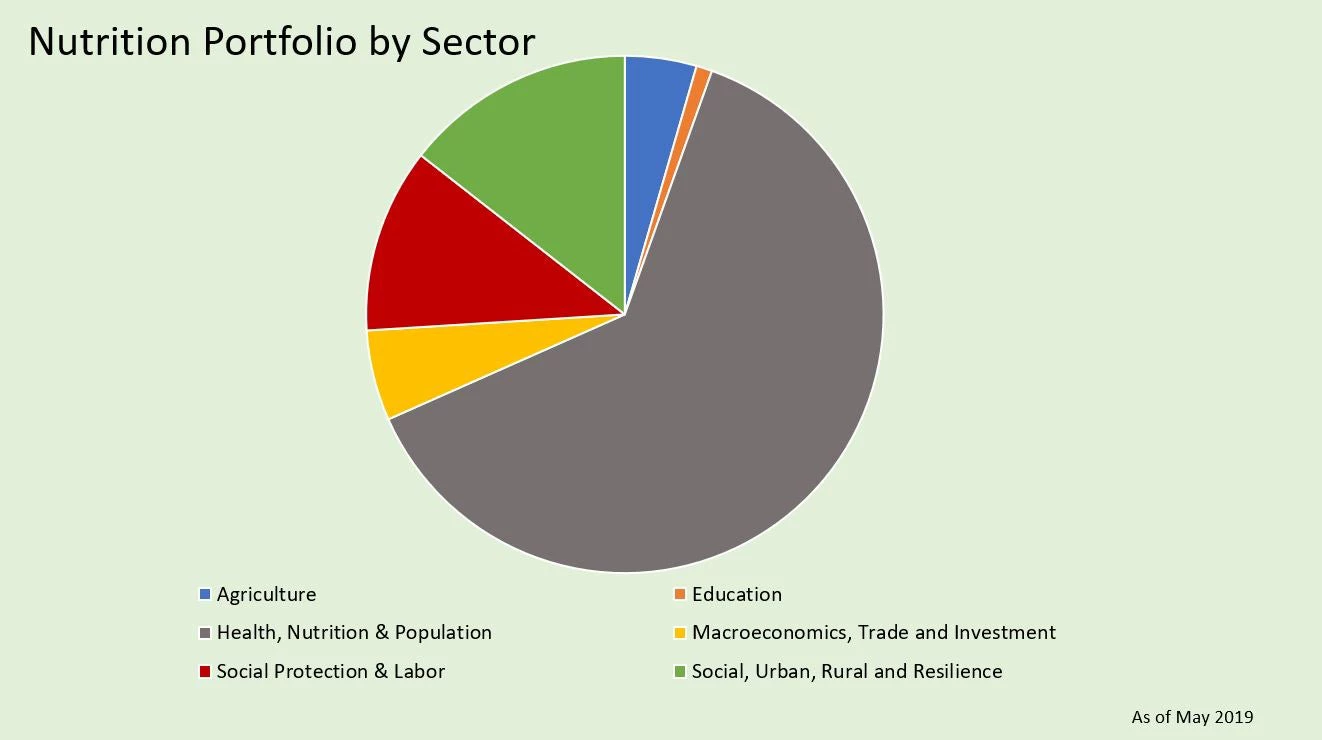An estimated 149 million children under 5 are stunted (low height for age), which compromises brain development, learning, and adult earnings. The good news is that innovative solutions can reduce child stunting and several countries are scaling-up these actions. As a response to increasing country demand, the World Bank has significantly increased its nutrition investments to nearly $1.2 billion globally in FY18. We spoke with Meera Shekar, Global Lead for Nutrition in the Health, Nutrition and Population Global Practice to tell us more about this trend—and new developments on the horizon that will help the next generation get the nutrients they need to thrive.
The Bank has just approved one of the largest new investments in nutrition in the Democratic Republic of Congo (DRC). Could you tell us more about this project?
This is indeed one of the largest nutrition investments the Bank has ever made, and it is significant because DRC has among the highest and most stagnant rates of child malnutrition. Globally, undernutrition is an underlying cause of some 45 percent of under-five deaths and in DRC, it’s a major challenge. DRC is one of the poorest countries in the world and it ranks among the lowest (146 out of 157) on the Human Capital Index. Addressing child malnutrition and health is therefore a key priority for the Government in order to build human capital and catalyze economic growth. This is a particularly significant investment by the Bank in the midst of the country’s Ebola outbreak.
Why is nutrition a key indicator in the Human Capital Index and why it is important for human development and economic growth?
Children who have adequate nutrition and early stimulation during the first 1,000 days have a life-long advantage in terms of productivity and economic potential. Research shows that when a child participates in early nutrition programs before the age of three, she can increase school completion by one year, and her income as an adult can increase by up to 50 percent. Children who escape stunting are also 33 percent more likely to escape poverty as adults. Getting nutrition right in the early years is therefore key to building human capital and ensuring higher economic growth.
What are the major trends effecting the Bank’s nutrition portfolio?
The Bank’s nutrition portfolio has grown several-fold over the last few years, with a current portfolio of nearly $4.2 billion. A large part of this (75 percent) is from IDA, with more than $1 billion from IBRD and additional co-financing from The Power of Nutrition and the Global Financing Facility (GFF) totaling nearly $250 million.
The Bank’s Human Capital Project has higlighted the importance of investing in people, which is putting a spotlight on the importance of nutrition. As a result, clients are demanding action and using the high-quality analytics at both the global and national levels to find potential solutions. In addition, advocacy efforts such as those from the Scaling up Nutrition (SUN) Movement and the upcoming “Nutrition for Growth” (N4G) high-level pledging event to be hosted by the Government of Japan next year have encouraged governments to work across sectors to invest in nutrition.
What types of innovative approaches have you introduced in the portfolio?
We are partnering with The Power of Nutrition to convince our client countries to invest more in human capital and nutrition. For example, the Rwanda Stunting Prevention and Reduction Project is scaling-up results-based approaches for nutrition. Madagascar is implementing the Bank’s first “multiphase programmatic approach” (MPA), which will focus on reducing stunting over the next ten years by getting people to change behaviors—from infant feeding to hygiene. In Pakistan, the government is exploring using conditional cash transfers to improve nutrition outcomes, and in Nepal, partnerships are being pursued with the private sector to make foods healthier.
As you can see, innovations are taking place everywhere and together with partners, we are supporting countries as they undertake efficiency analyses.
What are up-and-coming nutrition issues that we should have on our radar?
We are exploring technologies that provide better data and measurement. For example, the Bill and Melinda Gates Foundation, in partnership with U.S. Centers for Disease Control and Prevention, is testing the use of cell phones to measure children’s heights. This could revolutionize how quickly and accurately data is collected, reported and acted upon. Similarly, hand-held tools to do field data collection could improve Monitoring and Evaluation systems, which is a critical need.
While we are largely focused on undernutrition, obesity is an emerging challenge. Globally, obesity rates are rising rapidly, including in Low-Income Countries. Today, more than 40 percent of countries worldwide now face a double-burden, with high prevalence of both undernutrition and obesity. Childhood obesity is particularly damaging, since it is often rooted in the first 1,000 days of a child’s life.
In 2020, the Government of Japan will host a global pledging event around the Tokyo Olympics called “Nutrition for Growth” (N4G). N4G will focus on more money for nutrition, but also more nutrition for the money that is being invested. Tools such as Optima Nutrition help to maximize these returns, which then leads to a virtuous cycle of more money for nutrition. 2020 therefore promises to be a landmark year for nutrition.




Join the Conversation